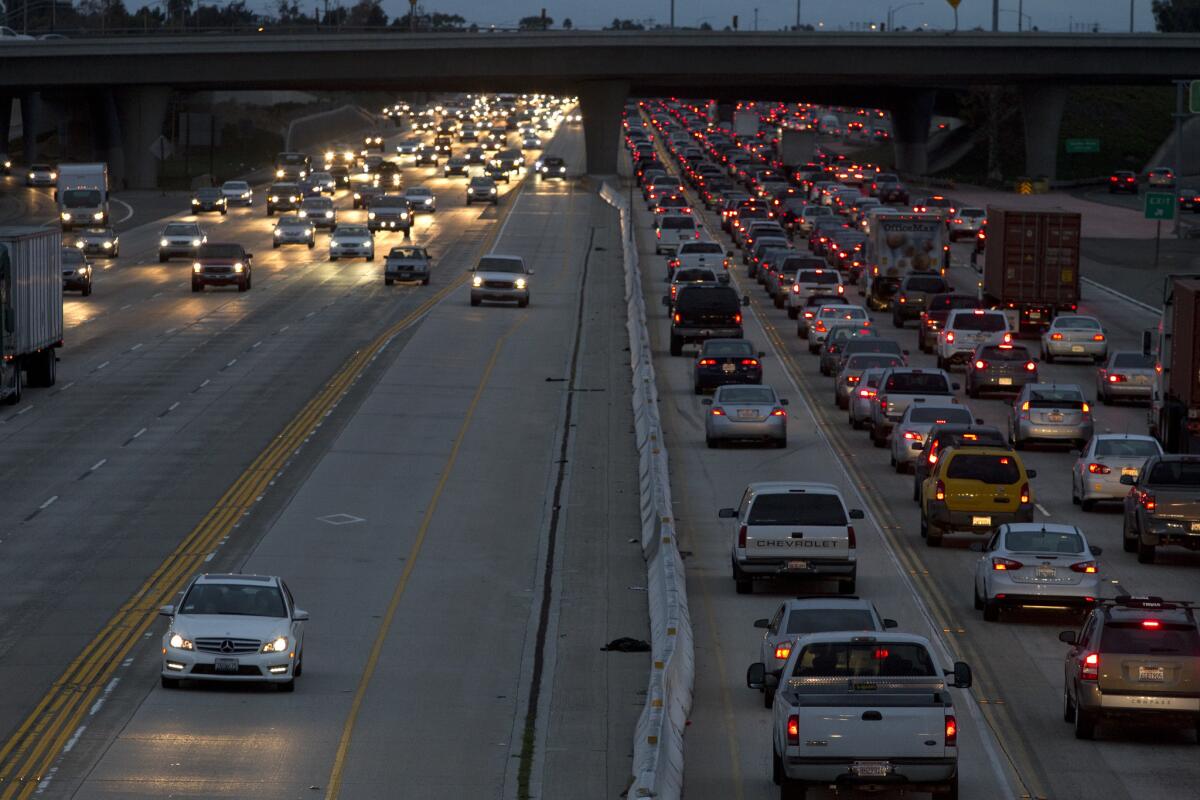Caltrans will put toll lanes on 405 Freeway despite objections

- Share via
State transportation officials are moving forward with a controversial plan to add toll lanes to a busy stretch of the 405 Freeway in Orange County despite strong opposition from nearby cities who argue the so-called “Lexus lanes” will hurt average commuters.
In December, Orange County Transportation Authority board members opted not to support the toll lanes in favor of a plan that would add one free lane in each direction, even though they were warned at the time that state officials may override the decision anyway.
On Friday, the California Department of Transportation announced it was doing just that, arguing the toll lanes would offer welcome respite for commuters.
“We’ve got over 400,000 people using the 405 corridor every day,” said Ryan Chamberlain, Orange County district director for Caltrans. “I’d say there’s going to be a lot of people celebrating this decision.”
The plan would create two high-occupancy toll lanes in each direction along a 14-mile stretch of the freeway from the 605 Freeway to Costa Mesa at an estimated cost of $1.7 billion.
Despite Orange County’s history as a longtime proponent of toll lanes and roads, the idea of putting pay-to-drive lanes on the 405 Freeway -- in part by using money from the county’s half-cent sales tax -- generated heated local resistance and months of rancorous debate.
As county transportation officials mulled how best to expand the 405, six cities along the route banded together to fight what some derisively referred to as “Lexus lanes,” saying they would put an unfair burden on commuters, push traffic onto local streets and prevent motorists in toll lanes from pulling off the highway to patronize local businesses.
On Thursday, Caltrans’ project development team, which includes OCTA staff and consultants, recommended the toll lanes option, Chamberlain said.
Chamberlain called the decision a “fantastic” one and said he does not anticipate departing from the recommendation, though the project’s Environmental Impact Report will not be finalized for several months.
He argued that HOT lanes benefit commuters because they allow transportation officials to better manage traffic and provide a consistent option for faster travel.
The toll lanes expansion “moves more people, moves more vehicles,” Chamberlain said. “It’s hands-down the most effective alternative and best performing alternative that we have.”
The Caltrans plan incorporates some of the OCTA proposal, but generated opposition because it adds the toll component and overtakes an existing carpool lane to create the two HOT lanes in each direction.
Caltrans is exploring the possibility of allowing vehicles with two or more occupants to ride free in the toll lanes, but a final decision has not been made, Chamberlain said.
The agency expects the bulk of project funding -- $1.3 billion -- will come from the county’s half-cent sales tax. But it’s unclear how the remaining $400 million will be raised. Chamberlain mentioned several possibilities including federal loans, grants and private investors.
Under the plan, Orange County transit officials would continue with their project adding a free lane on each side of the 405. When that work is done, Caltrans plans to build a second new lane on each side. These new lanes, plus two existing carpool lanes, would then be coverted to HOT lanes for use by solo drivings willing to pay as well as carpoolers with multiple passengers.
More to Read
Sign up for Essential California
The most important California stories and recommendations in your inbox every morning.
You may occasionally receive promotional content from the Los Angeles Times.











